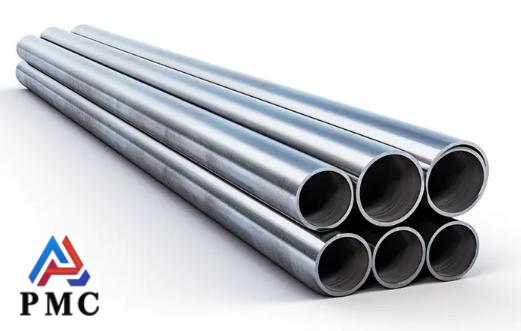
Pickling Treatment of Carbon Steel Tubes
In modern industry, carbon steel tubes are widely used in petroleum, chemical, electric power and other fields due to their excellent mechanical properties and cost-effectiveness. However, during the manufacturing, transportation and installation of carbon steel tubes, scale, rust or other impurities often form on the surface, which not only affects the appearance of the pipes, but also may reduce their service life and safety. Therefore, pickling treatment becomes a key step in the surface treatment of carbon steel tubes.
What is the pickling treatment of carbon steel tubes?
Pickling is a chemical treatment method that uses an acidic solution to remove scale, rust and other impurities from the surface of carbon steel tubes. Commonly used pickling solutions include hydrochloric acid, sulfuric acid and phosphoric acid. Pickling can not only clean the surface of the tube, but also form a dense passivation film on the surface, further improving the corrosion resistance of the tube.
In industrial production and various engineering applications, carbon steel tubes are exposed to different environments for a long time, and their surfaces are prone to forming oxide layers and rust. Pickling treatment is the right remedy for the situation. Acidic solutions react chemically with these oxide layers and rust to dissolve them, thereby achieving the purpose of cleaning the pipe surface.

Steps for pickling carbon steel tubes
1. Pretreatment: Before pickling, the pipe needs to be cleaned to remove oil and dust on the surface. Common methods include alkaline cleaning or solvent cleaning.
2. Pickling: Immerse the tube in the pickling solution. The soaking time depends on the surface condition of the pipe and the concentration of the acid solution. The temperature and time must be strictly controlled during the pickling process to avoid excessive corrosion.
3. Neutralization: After pickling, acidic substances will remain on the surface of the pipe, which needs to be neutralized with alkaline solution to prevent subsequent corrosion.
4. Passivation: After neutralization, a passivation film will form on the surface of the pipe, further enhancing its corrosion resistance. Commonly used passivators include nitric acid and chromate.
5. Cleaning and drying: Finally, rinse the pipes thoroughly with clean water to ensure that there are no residual chemicals, and dry them.
Notes on pickling treatment
When pickling carbon steel pipes, the following points should be noted:
1. Safety protection: Pickling liquid is highly corrosive, and operators need to wear protective clothing, gloves and goggles to avoid direct contact.
2. Environmental protection: Pickling waste liquid needs to be neutralized before discharge to avoid pollution to the environment.
3. Quality control: After pickling, the surface of the pipe needs to be inspected to ensure that there is no residual oxide scale or rust, and the passivation film is uniform and complete.
Application scenarios of pickling treatment
Carbon steel pipe pickling is widely used in the following scenarios:
1. New pipelines: Pickling is performed before the pipeline is installed to ensure a clean surface and extend its service life.
2. Maintenance: Regular pickling of used pipes to remove rust and impurities and restore their performance.
3. Special industries: In industries such as food and medicine, pickling can ensure that the pipelines meet hygiene standards.
Summary and Outlook
As a key metal surface treatment process, pickling of carbon steel tubes plays an important role in industrial production. Through a series of rigorous steps, it effectively removes impurities such as oxide layers and rust on the surface of carbon steel tubes, significantly improving the corrosion resistance, cleanliness and adaptability of the pipes for subsequent processing.
Looking into the future, with the continuous advancement of science and technology and the sustainable development of industry, carbon steel pipeline pickling technology is expected to be applied in more fields. On the one hand, in emerging industries such as new energy and semiconductors, the cleanliness and corrosion resistance of pipelines are extremely high, and the application of pickling technology will provide strong support for the development of these industries.
Read more: Does Seamless Carbon Steel Pipes Need to be Anti-corrosion?


